
County Armagh is one of the six counties of Northern Ireland and one of the traditional thirty-two counties of Ireland. Adjoined to the southern shore of Lough Neagh, the county covers an area of 1,327 km2 (512 sq mi) and has a population of 194,394 as of the 2021 census. County Armagh is known as the "Orchard County" because of its many apple orchards. The county is part of the historic province of Ulster.
Lurgan is a town in County Armagh, Northern Ireland, near the southern shore of Lough Neagh. Lurgan is about 18 miles (29 km) south-west of Belfast and is linked to the city by both the M1 motorway and the Belfast–Dublin railway line. It had a population of about 28,634 at the 2021 UK census and is within the Armagh, Banbridge and Craigavon district. For some purposes, Lurgan is treated as part of the "Craigavon Urban Area" along with neighbouring Craigavon and Portadown.

Portadown is a town in County Armagh, Northern Ireland. The town sits on the River Bann in the north of the county, about 24 mi (39 km) southwest of Belfast. It is in the Armagh City, Banbridge and Craigavon Borough Council area and had a population of about 22,000 at the 2011 Census. For some purposes, Portadown is treated as part of the "Craigavon Urban Area", alongside Craigavon and Lurgan.

Craigavon is a town in northern County Armagh, Northern Ireland. Its construction began in 1965 and it was named after the first Prime Minister of Northern Ireland: James Craig, 1st Viscount Craigavon. It was intended to be the heart of a new linear city incorporating Lurgan and Portadown, but this plan was mostly abandoned and later described as having been flawed. Among local people today, "Craigavon" refers to the area between the two towns. It is built beside a pair of artificial lakes and is made up of a large residential area (Brownlow), a second smaller one (Mandeville), plus a central area (Highfield) that includes a substantial shopping centre, a courthouse and the district council headquarters. The area around the lakes is a public park and wildlife haven made up of woodland with walking trails. There is also a watersports centre, golf course and ski slope in the area. In most of Craigavon, motor vehicles are completely separated from pedestrians, and roundabouts are used extensively. It hosted the headquarters of the former Craigavon Borough Council.

Armagh is the county town of County Armagh and a city in Northern Ireland, as well as a civil parish. It is the ecclesiastical capital of Ireland – the seat of the Archbishops of Armagh, the Primates of All Ireland for both the Roman Catholic Church and the Church of Ireland. In ancient times, nearby Navan Fort was a pagan ceremonial site and one of the great royal capitals of Gaelic Ireland. Today, Armagh is home to two cathedrals and the Armagh Observatory, and is known for its Georgian architecture.

Armagh City and District Council was a district council in County Armagh in Northern Ireland. It merged with Banbridge District Council and Craigavon Borough Council in May 2015 under local government reorganisation in Northern Ireland to become Armagh, Banbridge and Craigavon District Council.
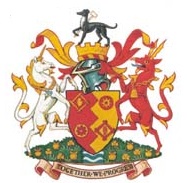
Craigavon Borough Council was a local council in counties Armagh, Down and Antrim, in Northern Ireland. It merged with Armagh City and District Council and Banbridge District Council in May 2015 under local government reorganisation in Northern Ireland to become Armagh, Banbridge and Craigavon District Council.
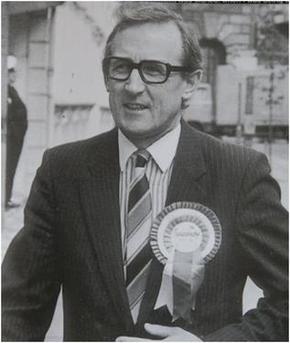
James Harold McCusker was a Northern Ireland Ulster Unionist Party politician who served as the Deputy Leader of the UUP Assembly Group from 1982 to 1986.

Portadown Railway Station serves the town of Portadown in County Armagh, Northern Ireland.

Lurgan railway station serves Lurgan in County Armagh, Northern Ireland.

The Local Government Act 1972 was an Act of the Parliament of Northern Ireland that constituted district councils to administer the twenty-six local government districts created by the Local Government (Boundaries) Act 1971, and abolished the existing local authorities in Northern Ireland.

The Armagh County Museum is a museum in Armagh, County Armagh, Northern Ireland. Located on the edge of the tree-lined Mall in the centre of Armagh city, the museum is the oldest County Museum in Ireland and was officially opened in 1937.
Dinah McNabb was a unionist politician in Northern Ireland.

The first election to Armagh City, Banbridge and Craigavon Borough Council, part of the Northern Ireland local elections on 22 May 2014, returned 41 members to the newly-formed council via Single Transferable Vote. The Democratic Unionist Party won a plurality of seats, although the Ulster Unionist Party attracted the most first-preference votes.

The Archbishop's Palace, Armagh, Northern Ireland, is a landmark Neo-Classical building located on 300 acres of parkland just south of the centre of the city. The building served as primary residence of the Church of Ireland Archbishops of Armagh for over two hundred years, from 1770 to 1975, and thereafter as headquarters of Armagh City and District Council from then until April 2015 when that local authority was replaced following the reform of local government in Northern Ireland in that year.
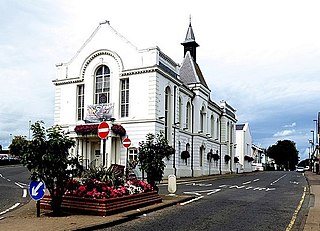
Ballymoney Town Hall is a municipal structure in the High Street, Ballymoney, County Antrim, Northern Ireland. The structure, which incorporates a local history museum, is a Grade B1 listed building.

Ballyclare Town Hall is a municipal structure in The Square, Ballyclare, County Antrim, Northern Ireland. The structure, which is primarily used as an events venue, is a Grade B2 listed building.

Portadown Town Hall is a municipal structure in Edward Street, Portadown, County Armagh, Northern Ireland. The structure, which is primarily used as a theatre, is a Grade B1 listed building.
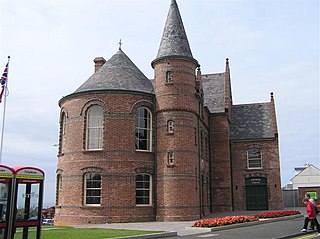
Portrush Town Hall is a municipal structure in Mark Street, Portrush, County Antrim, Northern Ireland. The structure, which is used as an events venue, is a Grade B+ listed building.
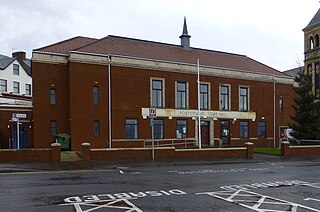
Portstewart Town Hall is a municipal structure in The Crescent, Portstewart, County Londonderry, Northern Ireland. The structure, which has been closed to the public since December 2019, is a Grade B2 listed building.




















